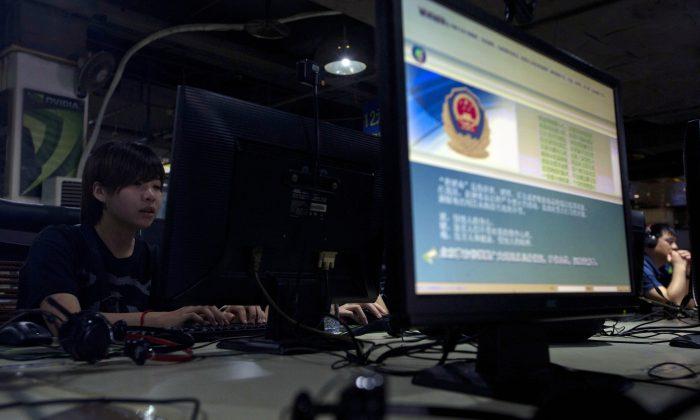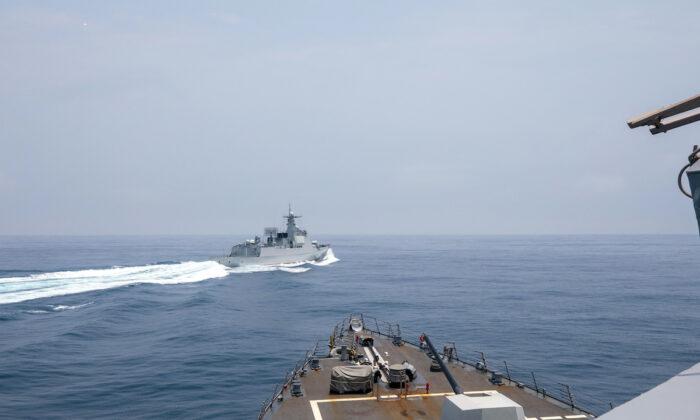Commentary
China is about to launch the world’s biggest emissions trading scheme, because China is the world’s biggest polluter. And, the scheme has three big, huge, truck-sized loopholes that will advantage China’s biggest pollution emitters. First, there will be no absolute caps on China’s emissions as in other trading programs. Second, the fine on Chinese companies that violate the rules is minuscule at under $5,000. Third, the cost of polluting in China will be about 10 times less than the cost of polluting in Europe. That means Chinese industries will have an advantage over their Western and allied counterparts, thus facilitating China’s deindustrializing of the democracies through offering cheaper (sometimes forced) labor, and lower environmental standards, against which democracies cannot compete on price. The low cost of China’s emissions, which are a minimal slap on the wrist, should be heightened through an increase in international tariffs imposed on the biggest of China’s industrial polluters.
China is currently the world’s biggest investor in planned coal-fired power plants. Its cheap energy flows through to all of its exports, which rely on that energy to effectively compete on price in global trade.
Chinese officials are trying to get in front of emissions tariffs by claiming that China’s new carbon market will reduce its emissions to peak before 2030, and achieve zero emissions, or carbon neutrality, by 2060. China’s carbon program is initially targeted at the power sector, in which it will involve 2,225 companies responsible for one seventh of the globe’s carbon emissions due to the burning of fossil fuels, according to the International Energy Agency (IEA).
Emitters will be given a fixed carbon allowance each year, which they can increase through purchases from other emitters, or decrease by improving their environmental practices for which they will be compensated when they sell their unused emission allowance. “That pushes emitters to think of controlling and reducing emissions in terms of a market,” according to the Wall Street Journal.
The emissions trading will begin Friday, according to Bloomberg. It will expand from the power sector to aluminum, cement, and steel next year, according to Chinese officials. By 2026, China’s emissions market will supposedly expand to several additional industries, including building materials, chemicals, domestic aviation, paper, and petrochemicals.

The average price in China for one metric ton of carbon emissions will likely trade as low as $6.18, according to China’s deputy environment minister. That price is much lower than the current minimum $59 per metric ton in the European trading system, which could rise to $71 if proposed European rules take effect. In Britain, the right to emit one metric ton of carbon currently costs $55.
China’s failure to charge for emissions in the past, and exceedingly low emissions trading price in the future, will give it a huge export advantage across dozens of critical and strategic industries to both economic and military power, while at the same time providing China with a carbon-trading scheme to make it look more environmental for purposes of public relations.
The fine for failure to comply with China’s trading scheme is tiny at a maximum $4,600. The monetary fine is minuscule compared to industries with billions in revenues that it will supposedly regulate.
Plans for the trading scheme were first hatched in 2011, and then confirmed before the 2015 Paris climate negotiations. The next climate conference will occur in Glasgow, Scotland, in November.
On July 14, the European Union proposed broad economic measures to decrease the bloc’s fossil fuel consumption so that renewable energy rises from 20 percent currently to 40 percent by 2030. The EU will impose first-of-its-kind taxes on imports from countries with high emissions of carbon dioxide and methane, forcing them to pay the same amount per metric ton as European companies.
Some U.S. senators are also proposing import fees on polluters, but details are lacking. Emissions tariffs on big polluters like China will prevent carbon leakage, whereby manufacturers shift production to countries in order to avoid strict emissions standards.
U.S. and European emission tariffs could hit Chinese and Indian imports, and push companies globally to scrutinize their international supply chains. At the same time, they will increase demand for wind turbines, solar, and electric vehicles, in all of which China is strong after stealing intellectual property and subsidizing its industry in order to wipe out its international competitors.
U.S. and European leaders, who were naïve or complicit in China’s thefts, are in part to blame.
“US leaders, both government and finance, knowingly gave critical clean energy industries to China in spite of the clear risk to our national security and decimation of our advanced manufacturing workforce and infrastructure,” according to Desari Strader, who founded a solar manufacturing company that has all-American supply chains. Ms. Strader wrote in an email, “And they did so knowing the PRC’s record of human rights abuses, use of forced/slave labor, environmental degradation, aggressive theft of key US intellectual property, and illegal trade practices.”
Exporters to Europe from countries that have their own carbon taxes would be able to deduct them from Europe’s tax, called a “carbon border-adjustment mechanism.” Under the EU system, which will initially apply to steel, unfinished aluminum, cement, and fertilizer, auditors would monitor foreign companies’ greenhouse gas emissions starting in 2023, and begin paying the tax in 2026. However, such auditing, especially in countries like China, can be influenced by the state to the point of total unreliability.
Emissions tariffs on China’s dirty industries are necessary to penalize the country for its heavy pollution. But they should not be limited by geography, and they should not be reliant on auditing procedures that are inherently unreliable in an authoritarian country without rule of law. Tariffs on just American, European, and allied imports from China will lead to carbon leakage to other countries as China’s industrial heavyweights seek new markets where on price, they will outcompete Western industries that are comparatively clean. Lawmakers in the West and among allies must go further by imposing a simpler and geographically broader tariff on all of China’s cheap and dirty exports.
Anders Corr has a bachelor’s/master’s in political science from Yale University (2001) and a doctorate in government from Harvard University (2008). He’s a principal at Corr Analytics Inc., publisher of the Journal of Political Risk, and has conducted extensive research in North America, Europe, and Asia. He authored “The Concentration of Power” (forthcoming in 2021) and “No Trespassing,” and edited “Great Powers, Grand Strategies.”





